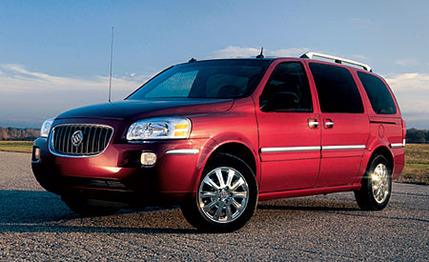
 Road Test
Road Test
In the 21 years since Chrysler kicked off the minivan era with the introduction of the original Dodge Caravan and Plymouth Voyager in 1984, General Motors has never fielded an entry that achieved much success in this segment. Perhaps the closest the company came was with the new-for-1997 Pontiac Trans Sport Montana, which surprised a lot of people by coming in first in a comparison test ["Matched Boxes," C/D, February 1998].
Since then, however, competition in the minivan segment has gotten a lot tougher. Honda has redesigned the 5Best-winning Odyssey twice, and recently, Toyota overhauled the Sienna. Even worse for the segment, buyers began to forsake minivans in favor of SUVs. Consequently, neither the Montana (no longer using the Trans Sport moniker) nor its GM siblings-the Chevy Venture and the Oldsmobile Silhouette-ever achieved major sales of more than 100,000 per year.
With this lagging track record and a sagging minivan market, GM was hesitant to fund a big-bucks investment for an all-new minivan that would replace this aging gang. Instead, the company decided to perform some major upgrades on its vans for 2005 and offer them to more divisions within the company.
The Buick Terraza is one of these four redone-for-2005 minivans, and the first-ever minivan for Buick. With this new herd of minivans comes a first one for Saturn, too, the Relay. Chevy's old Venture is renamed the Uplander, and Pontiac's Montana adds SV6 to its name. So even with the Olds Silhouette disappearing along with the entire division, GM's minivan count is up by one.
The first difference you see in the Terraza is its stronger, more aggressive nose. There were a number of reasons driving this change. One was to "address the reluctant van buyer who can't get past the look but desires the functionality," according to the home office. Buick says a squared-off front end yields an SUV appearance. This is accomplished by a 3.9-inch height increase over the old GM vans, making the Terraza 72.0 inches tall, exactly the same as its width, mimicking the proportions of many SUVs. In our view, the Terraza still looks more like a van than an SUV, but its nose definitely sticks out in a crowd.
The longer nose is not, however, solely cosmetic. This snout makes the Terraza roughly four inches longer than the old Chevy and Pontiac vans, improving its performance in NHTSA's front-crash rating from four to five stars. Open the hood, and there's so much space between the front of the vehicle and the radiator that it appears the Terraza would be a good bet in a demolition derby.
The new GM vans all use a chassis similar to the old ones, which means a strut-front suspension. But the Buick has an independent control-arm suspension in the rear, adapted from the Rendezvous, whereas the other GM vans get the independent-rear setup only with all-wheel drive. Dimension changes are subtle: Wheelbase is lengthened slightly to 121.1 inches, front track is widened by less than an inch to 62.4, and rear track is down by almost a half-inch to 62.9.